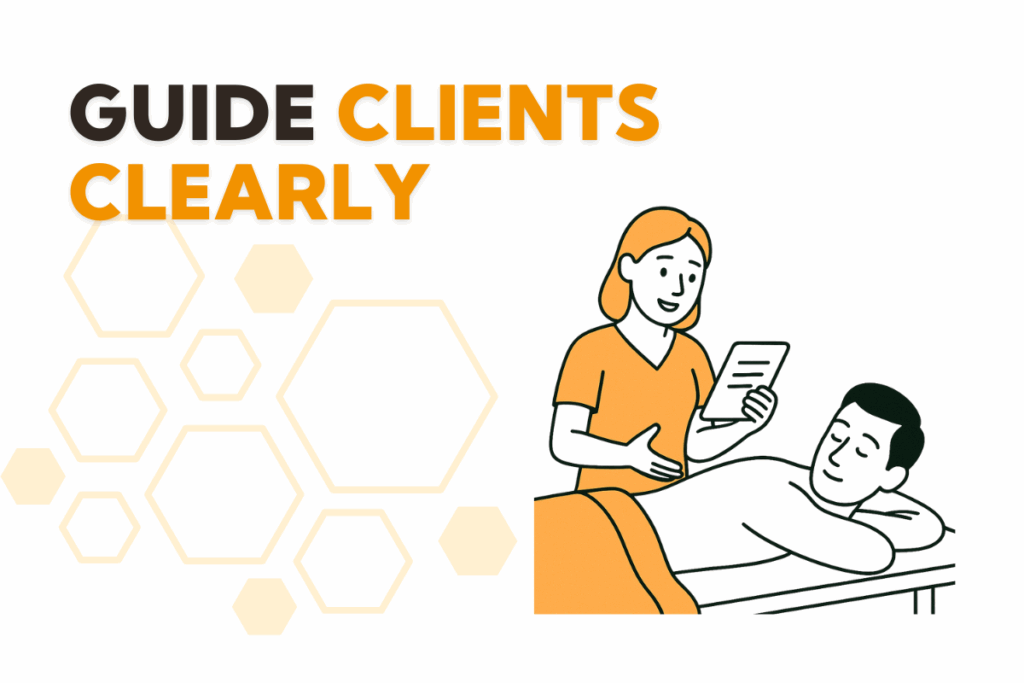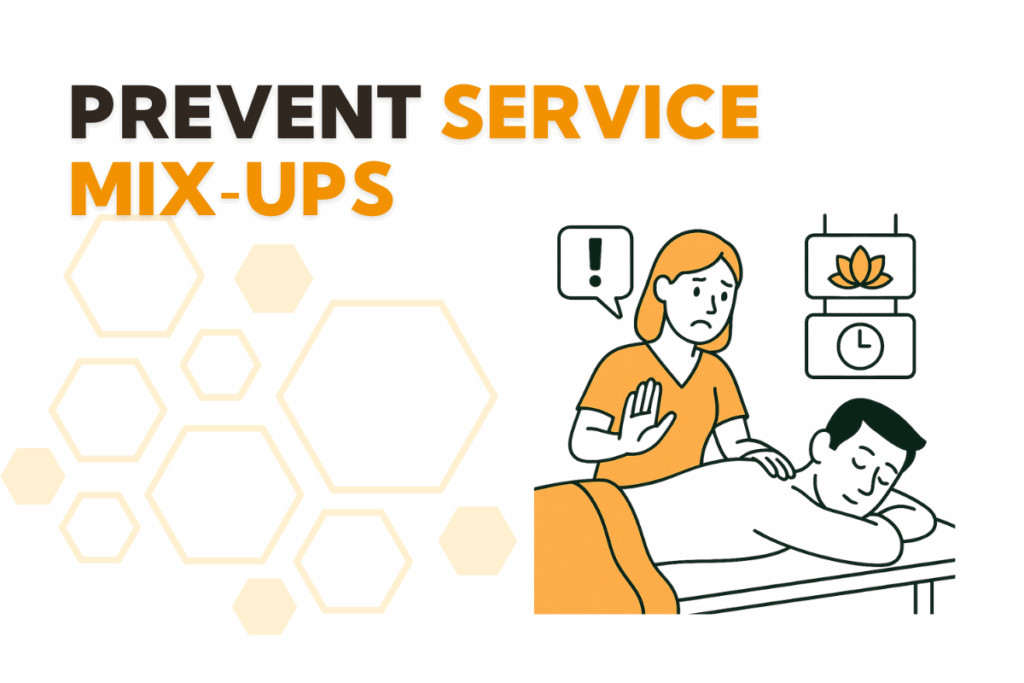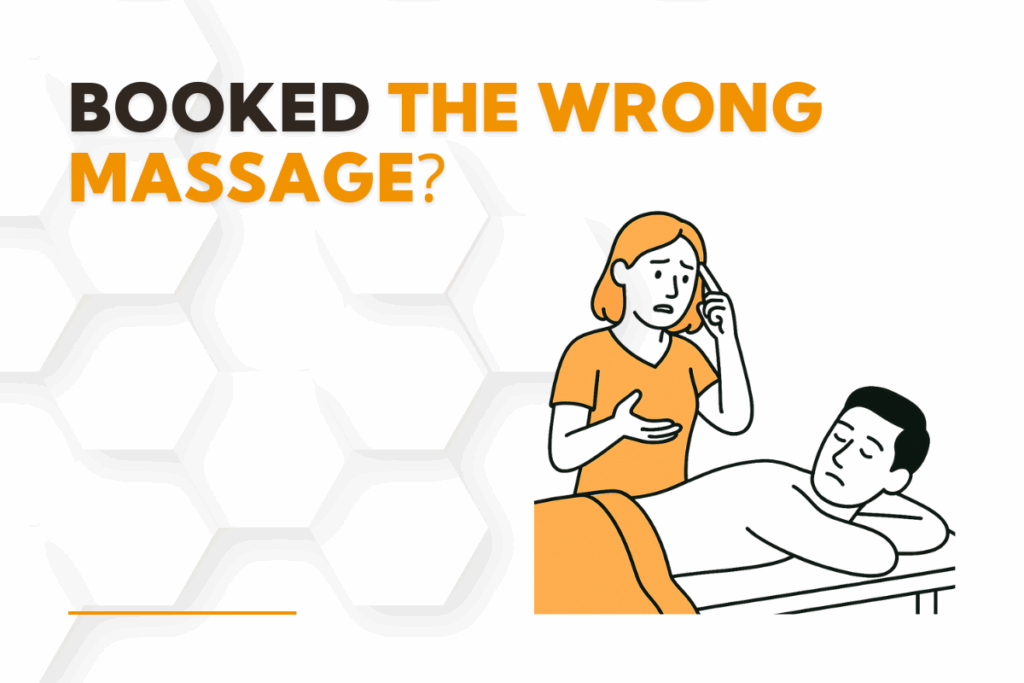Most clients do not speak in service labels. They describe pain, goals, or pressure preferences. When a bot or booking page jumps straight to a menu, it misses the context behind the question. That is the moment when client booked the wrong massage becomes more likely, because the system did not slow down to clarify intent.
How Misbookings Undermine Trust and Flow
Misbookings show up as awkward conversations at check-in, rushed plan changes, and disappointment that is hard to repair. Clients arrive expecting firm pressure and relief while the service booked points to relaxation. Therapists shift gears and lose precious minutes. Over time, patterns like client booked the wrong massage can quietly reduce first-visit retention and word-of-mouth.
A Therapist-First Script That Clarifies Choices
Use natural prompts that mirror front-desk language
Ask a simple, kind question before showing options. Try: “Are you looking for firm pressure for muscle tension or a calming session to relax?” This rephrasing keeps the booking on track and reduces the chance that client booked the wrong massage because the bot moved too fast.
Add short, plain-language service descriptions
Define each service with pressure level, intent, and ideal use case. A few clear sentences help clients see themselves in the right choice and lower the risk that client booked the wrong massage due to guesswork.
Offer a human fallback when intent is unclear
If a client types “my back hurts,” offer to connect them with a person. A warm handoff protects trust and cuts down the times you hear that client booked the wrong massage after arrival.
For guidance on writing clarity-boosting microcopy that prevents confusion, see this practical overview from Nielsen Norman Group on UX microcopy and intent clarity: https://www.nngroup.com/articles/microcopy-ux-writing/
Design a Clear, Guided Booking Journey
Start with intent, not the menu
Open with a single clarifying question about goals or pressure. Then present the best-fit options with short explanations. This sequence reduces cases where client booked the wrong massage because the client never understood the difference between services.
Confirm the choice before the calendar
Show a review screen that restates service, therapist, and time. A quick confirmation catches errors early and prevents the message that client booked the wrong massage after the slot is taken.
Use keywords to route choices
When a client mentions pain, recovery, or firm pressure, guide them toward the right therapeutic option. When they mention relaxation, guide accordingly. This simple routing helps avoid another client booked the wrong massage moment by aligning language with selection.

What To Do When a Misbooking Slips Through
Reach out with a gentle pre-visit check
Send a short confirmation that restates the service and intent, and invite questions. This proactive touch often resolves the issue before the appointment, so you do not discover that client booked the wrong massage at the table.
Capture the pattern in your records
Log the confusion in your charts to learn over time. Systems that make note-taking easy help you spot repeated triggers that lead to client booked the wrong massage and refine your prompts accordingly. Tools like electronic charting SOAP notes support quick, structured documentation.
Measure What Improves After Changes
Track the signals that matter
Watch first-visit retention, last-minute service changes, and cancellations tied to mismatches. If those numbers improve, your updated prompts and flow are working. Review trends regularly with massage clinic reporting and analytics to see whether “client booked the wrong massage” incidents decline month over month.
Make Automation Sound Like You
Keep the voice warm and specific
Write like you speak in the treatment room. Name the outcome clients want and map it to the right service. Keep refining the words until you see fewer instances where client booked the wrong massage and more moments where someone says, “That was exactly what I needed.”
Invite feedback after each first visit
Ask one quick question: “Did the service match what you expected?” This closes the loop, surfaces blind spots, and gives you the language real clients use so you can prevent the next client booked the wrong massage with honest, human copy.

A smoother start leads to better care
When your booking flow slows down to clarify intent, clients feel understood before they arrive. Therapists prepare with confidence. The simple act of choosing the right service becomes part of the care you provide, and the phrase client booked the wrong massage becomes a rare exception rather than a daily surprise.
FAQs
New clients tend to describe symptoms and goals rather than service names. Without a clarifying step, the system pushes them to a menu that feels like guesswork, which raises the chance that client booked the wrong massage.
Yes. Start by adding a plain-language question before the menu, short descriptions under each option, and a review screen that confirms the choice. These small changes address most cases where client booked the wrong massage.
Acknowledge the intent, restate what will help most, and offer a quick change if the schedule allows.


